Myself and some family members headed on an ancestry adventure to Gettysburg, PA to see if we could find my great-great uncle’s name, who served in the army during the civil war, on a memorial. Along the way, we were able to spend an afternoon at an encampment where a very kind young lady and her husband educated us greatly on what life was like in 1861-1865 during the civil war. Of course what sparked my interest was the clothing during that time period. She stressed the importance of both sewing and knitting back then.
Needle and thread played an important part in providing comfort to the soldiers on both sides during the war. Sewing machines were not in much use back then so most of the sewing was done by hand. Soldiers needed patches sewn onto warn out areas of their uniforms, lost buttons replaced, ripped seams sewn back together, bed linens, pillow cases, bed shirts and quilts needed to be made for the soldiers, and stripes and other military insignia needed to be sewn onto uniforms. Women and girls threaded their needles and took on these tasks practically sewing day and night. Many sewing circles were ask to do some of the larger responsibilities. Miles and miles of bandages were sewn for the four years worth of wounds.
When soldiers were ready to leave for war many were given a “housewife.” The housewife was a small sewing kit with a small reel of thread, several needles, straight pins, and perhaps an extra button or two. The items were placed on cloth and easily rolled up. Some of them had the soldier’s initials embroidered on them. This was a gift that was made and given by a mother, wife, sister, or female relative.
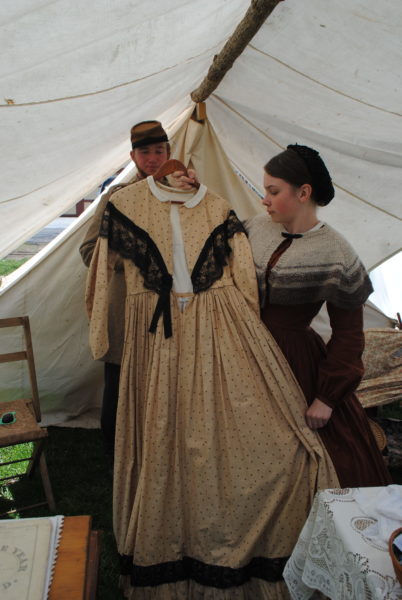
A beautiful civil war gown trim in black lace that she also hand made by knitting.
|
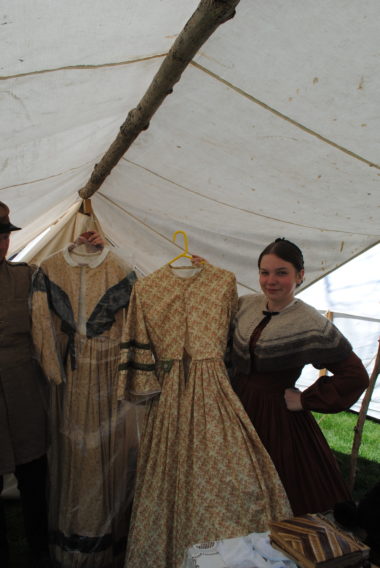
The beautiful civil war gowns she made. Showing two of them and wearing another one. |
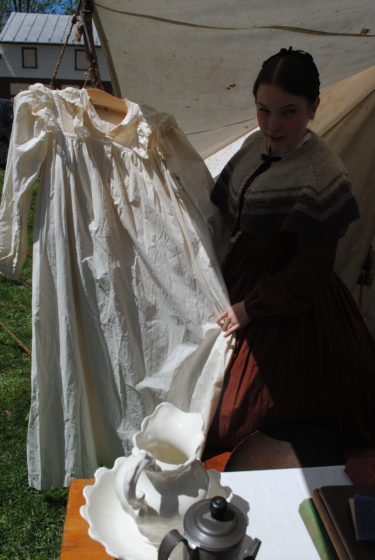
Civil war era night gowns were often made from muslin cotton fabric trimmed with ribbon gathered at the neckline and wrists. |
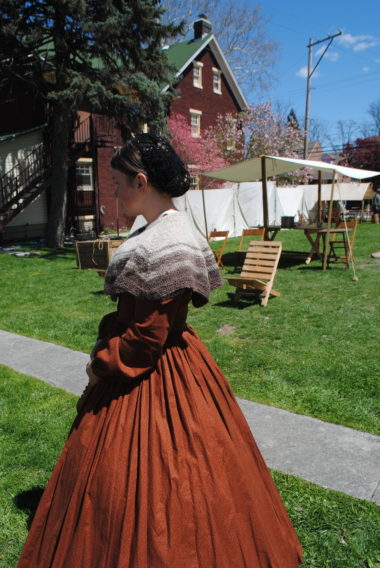
During the Civil War era, dresses were designed to make the waist appear smaller. They were made to be durable to last as long as possible. Skirts were very full and were usually knife pleated or gauged, (hand-gathered in a time consuming manner), into the waistband. Here is a beautiful side view of her gown where you can see the pleating and the fullness. |
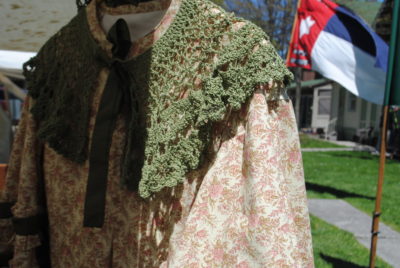
The civil war shawl or capelet was knitted in a “lacy” pattern giving the knitted shawl a fancy look in a time when lace was handmade. The capelet has a ribbon string tie closures at the neck. |
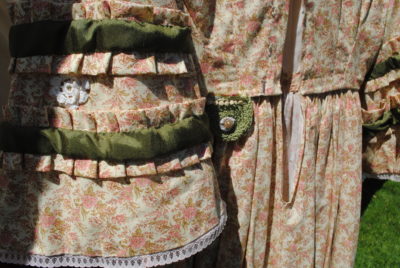
A close up of the bishop sleeve, which was a popular basic style during the civil war, showing the pleated ruffles and lace trim. |
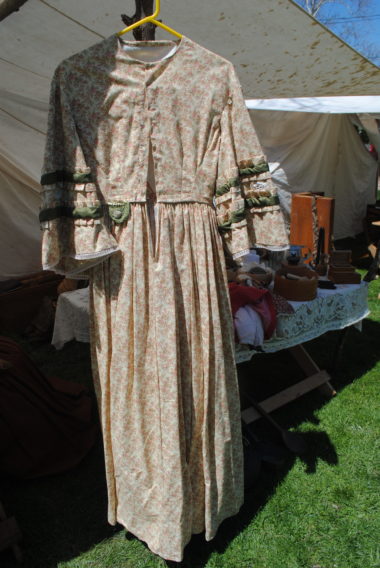
A view of the dress makers beautiful work! |
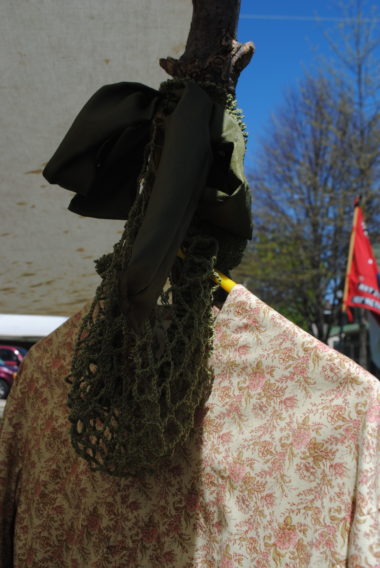
A hand crocheted bun cover head dress commonly warn by women during the civil war era. |
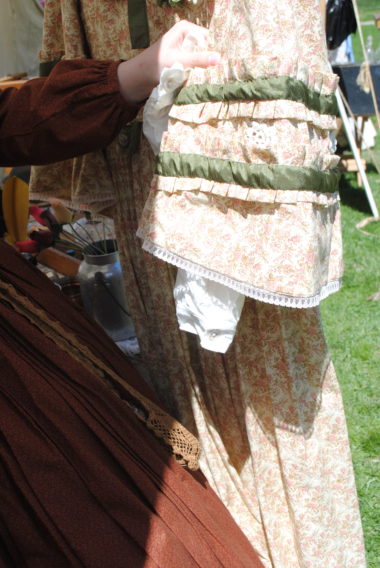
Another view of the fine detailed sewn on the sleeve. |
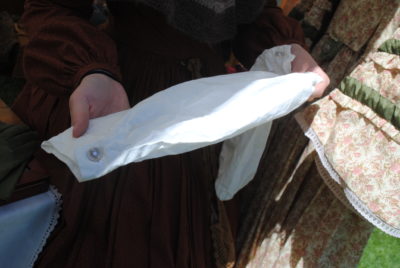
White under sleeves made from cotton or linen were often found with civil war gown attire. They are made separate from the gown as shown in the photo above and can compliment any gown. |
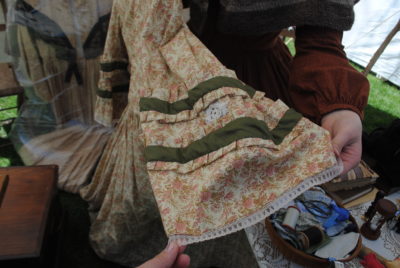
Here is a close up of the trimming on the bell sleeve from one of the civil war gown’s she made. It includes layers of pleated ruffles in both green fabric and the gown’s fabric, and lace trim. |
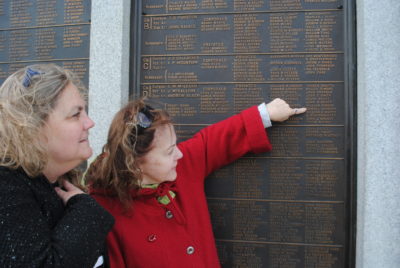
Here is me and mom pointing to my great-great uncle’s name, private Samual Vanhorn who served with company D. There were 34,530 names on this memorial. It took us a while to find him! |
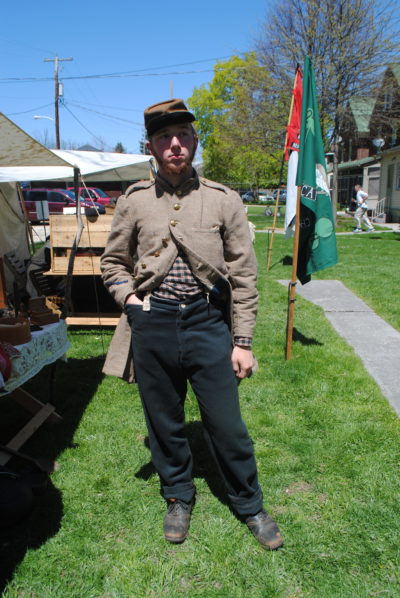
Here is her husband in the uniform that she made for him. The hat and military jacket were made from wool. Wearing a wool uniform helped keep the soldiers warm at night. However, many soldiers who were fighting in the south suffered heat stroke because the wool kept them too warm during the day.

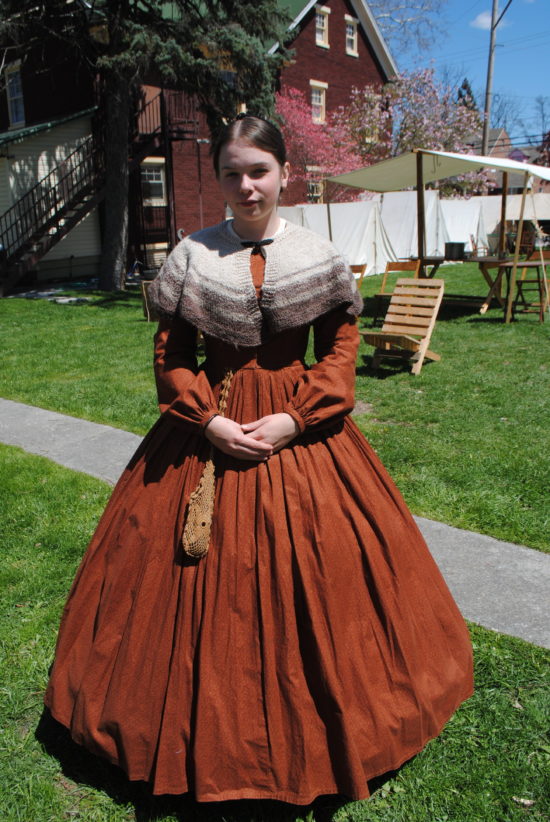
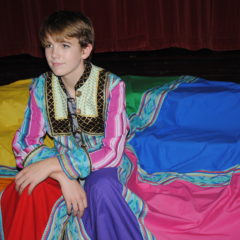
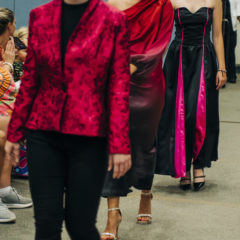
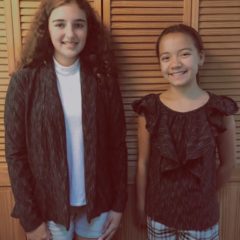
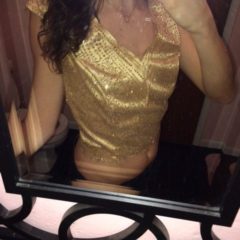
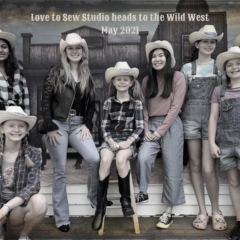
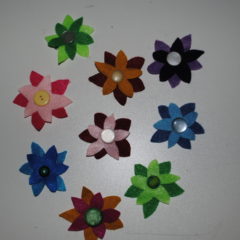

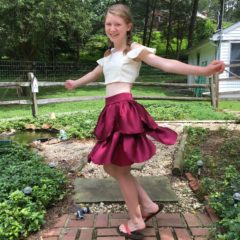
Leave a Reply